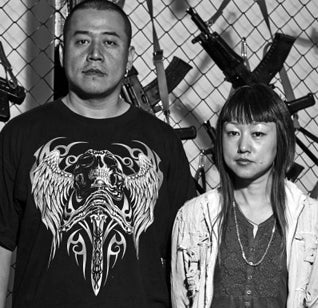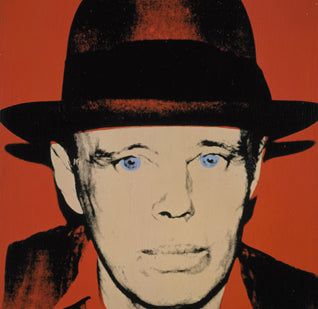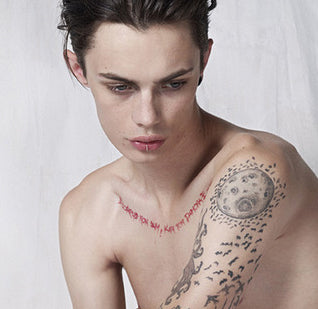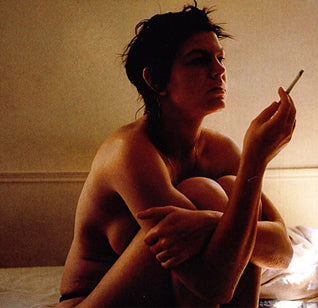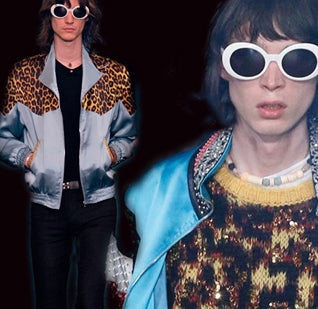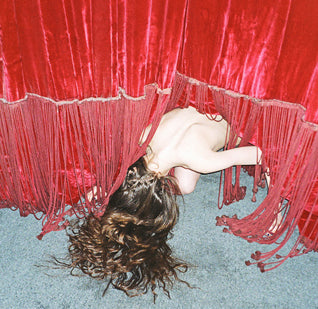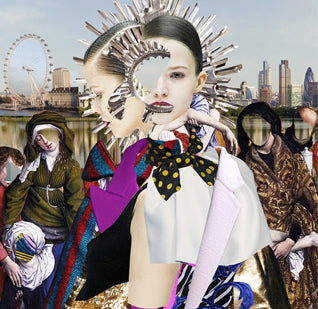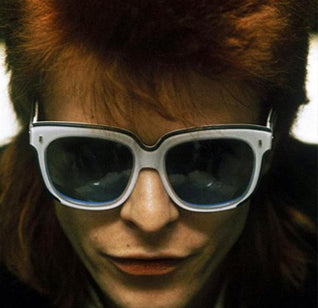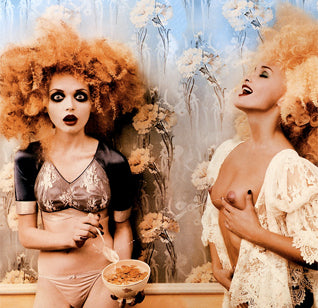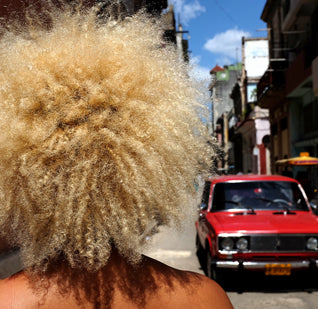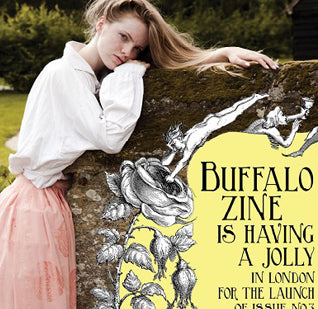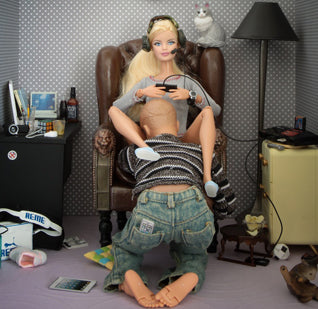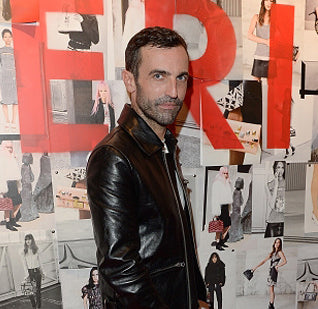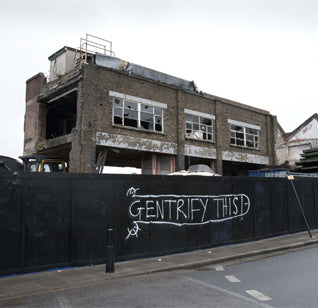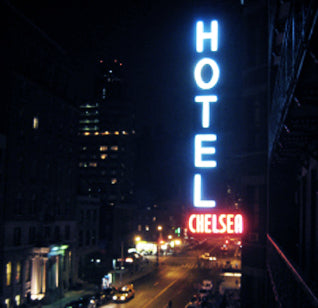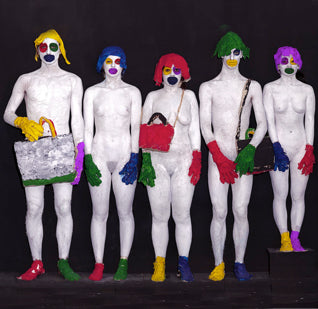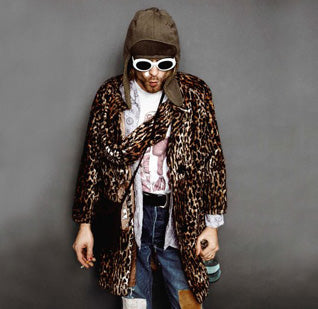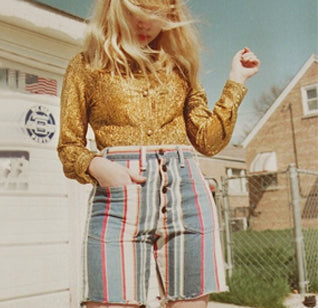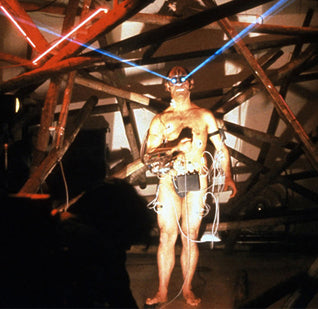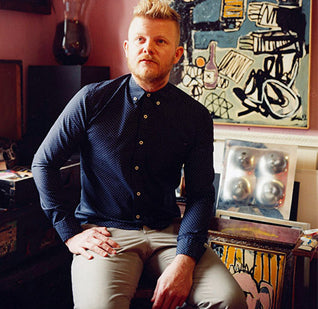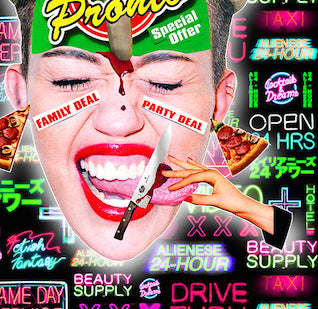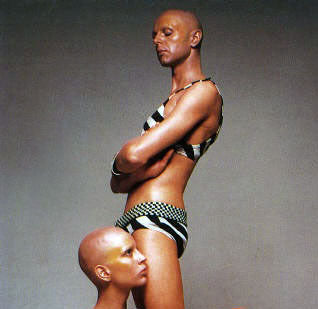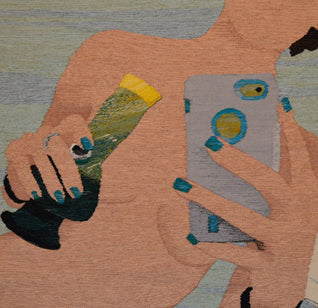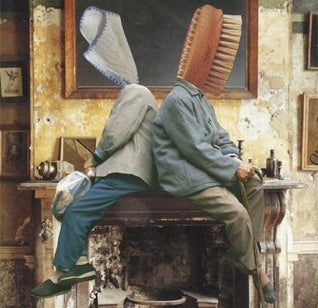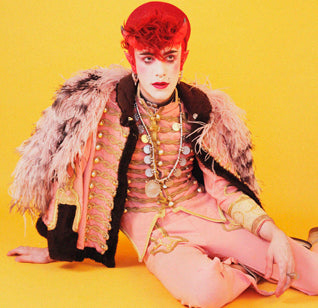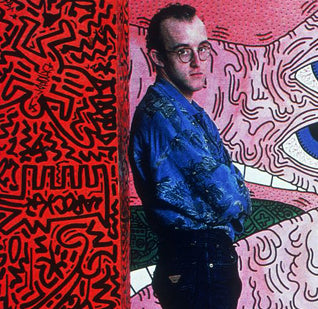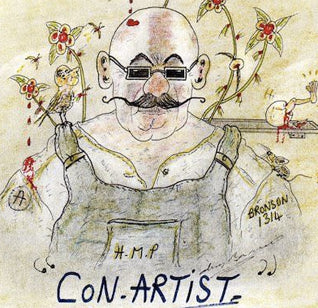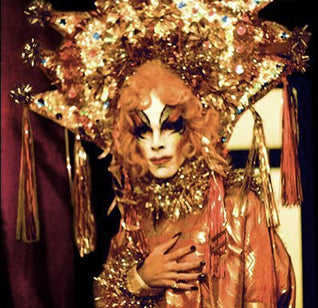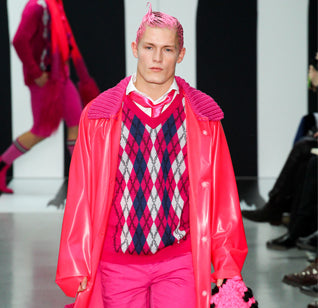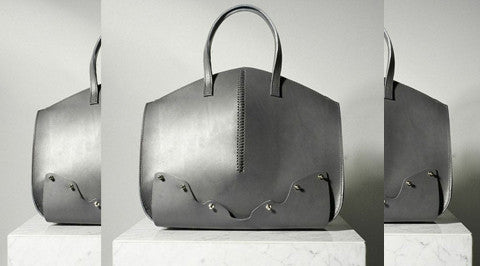THE COLLAGE RENAISSANCE
Contemporary collage is the new Pop Art collectors are buying into
by Harriet Baker
Contemporary artists are having a hell of a lot of fun with found imagery. In response to the rise of digital media or the return of handmade and craft elements, collage artists are announcing themselves in new and innovative ways. Take Quentin Jones, whose languid swoops of ink and fruity nudes have made her a darling of the fashion industry, or Ernesto Artillo, a Spanish artist who has worked with the likes of Elie Saab and Céline, bringing slick sophistication and a minimalist streak to a medium occasionally chaotic.
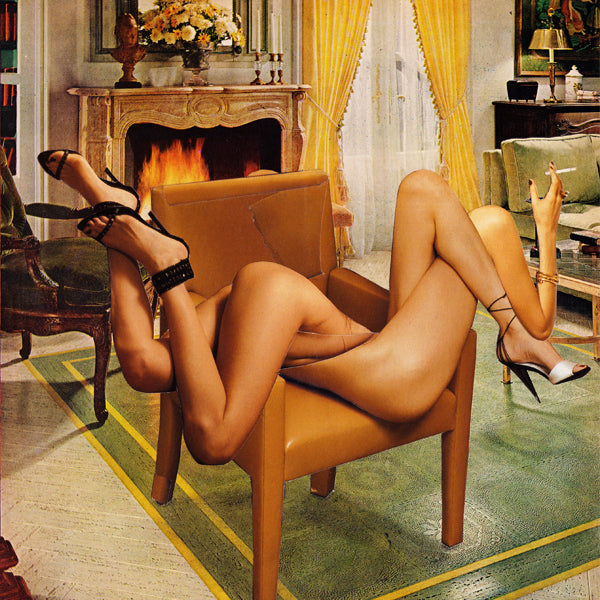
Kieran Madden: Mantis, 2014
The best way to determine the reason for collage’s resurgence is perhaps to look to its core. Collage art has by and large been made in response – to a social milieu, a political regime or artistic value system. It’s a subculture, a place where humour meets politics and statements are made. In an age of social media and image production - from Instagram to GIFs – practitioners of collage favour the hand splicing of recycled images into new configurations. It’s an analogue format that creates contemporary hybrids. From its roots in European Dadaism in the early years of the twentieth century, shadowing modernism and tracing its way through photography, collage is a medium as diverse as it is politically charged. Coined by Georges Braque and Pablo Picasso, the term ‘collage’ points towards a medium simultaneously serious and tongue-in-cheek; a technique that is deeply referential of the political world in which the works were produced.
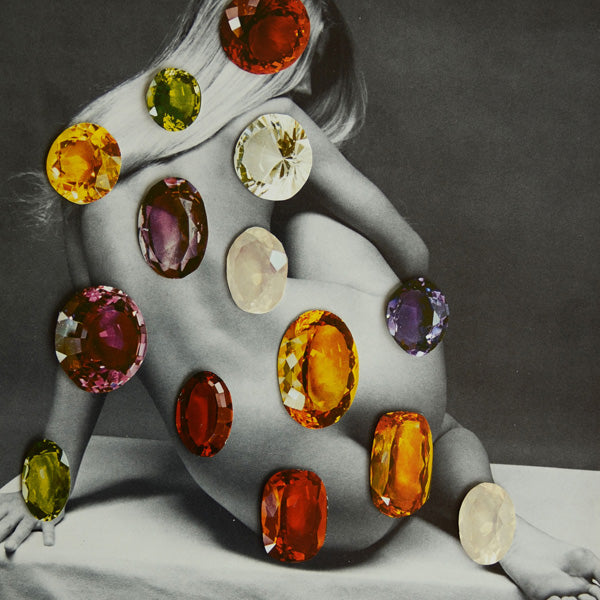
Contemporary practitioners do not shy away from bold statements. John Stezaker’s collages are irreverent. A British artist who trained in the 1970s, his use of glamorous portraits of dapper men and Hollywood stars mashed with landscapes, have the effect of the uncanny. In 2012, Stezaker won the Deutsche Börse photography prize to a mixed reception, as a few critics questioned whether a conceptual artist – who deals with the destruction of photographs – could win a prestigious photography award, proving that collage as an art form continues to be nothing if not controversial. Stezaker’s artworks command a high selling price, showing that the value of these works continue to rise despite the controversy that surrounds their creation.

Quentin Jones: Electric Circus, 2014
And however clichéd it sounds, it is this turning of something old into something new that is a pull for many artists. US-based Jesse Treece’s collages have a vintage feel – his images come from science fiction, comic books and album artwork of the 1990s. “For me it's a way of taking something from the past and making it seem new. I'm trying to use elements and textures that seem familiar to create new worlds.”
There are many of this ilk, and in fact Treece confesses that it is difficult to be original. Joe Castro creates vintage Technicolor worlds, whilst the work of Alexandre Coll has a similarly dystopian feel, taking sci-fi images and turning them into something new. “I try to convert concepts in landscapes,” he says. He experimented with collage and stop-motion animation, creating a music video using 2500 photographic images and a programme called Dragon Frame. But like the work of Höch, where Coll’s collages might seem chaotic, they are in fact tightly organised. “I think organization and methodology are good friends of collage,” he says.

Kerstin Stephan: Adores Me, 2012 & Flower Head, 2012
Where some artists play with dystopian worlds through their work, female practitioners of the medium are using collage to tackle issues of identity and self-portrayal. Annegret Saltau fiercely examines her own identity through portrayal in collage through hand-stitching images of her own face together. She says, “I want to exchange different levels in my work: young and old, animal and human, head and body, eyes and mouth, inside and outside) in order to look behind the ‘mask’ and to turn the inside out.” The stitches threaded throughout her pieces are a metaphorical testament to the complications of self-definition. These new artists are examining femininity and identity in novel ways: look to the work of Dennis Busch, whose work sees gems and flowers superimposed over the female form, or for a slightly darker take on female sexuality, Kieran Madden uses images from American films and collages in a traditional method to create alternative narratives.
The list, simply, could go on. To see more collage works visit our collection at www.kidsofdada.com/collections/art/collage

